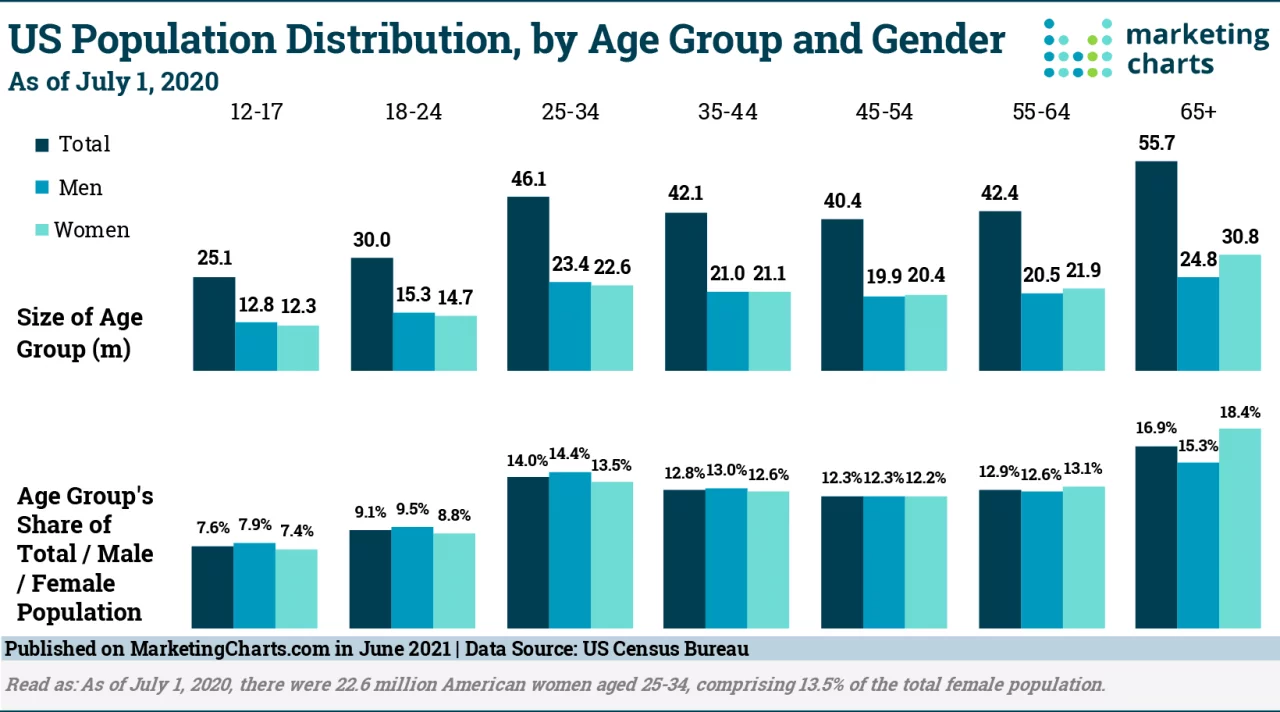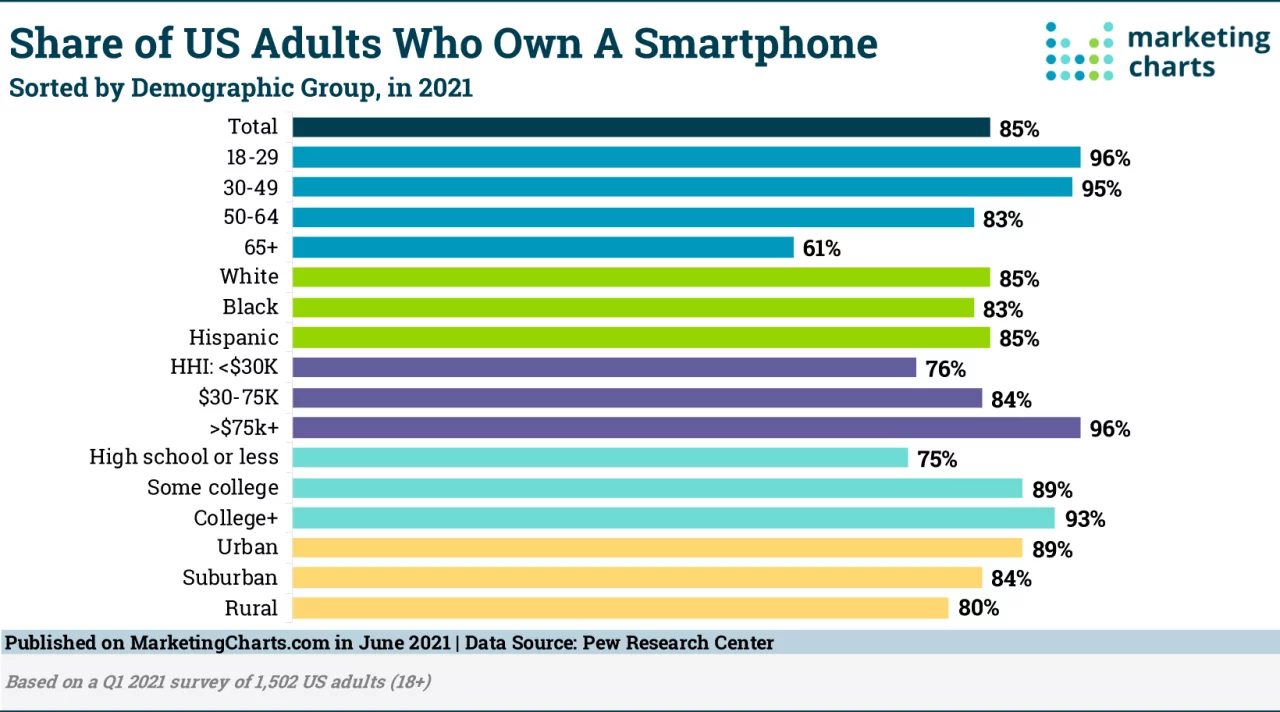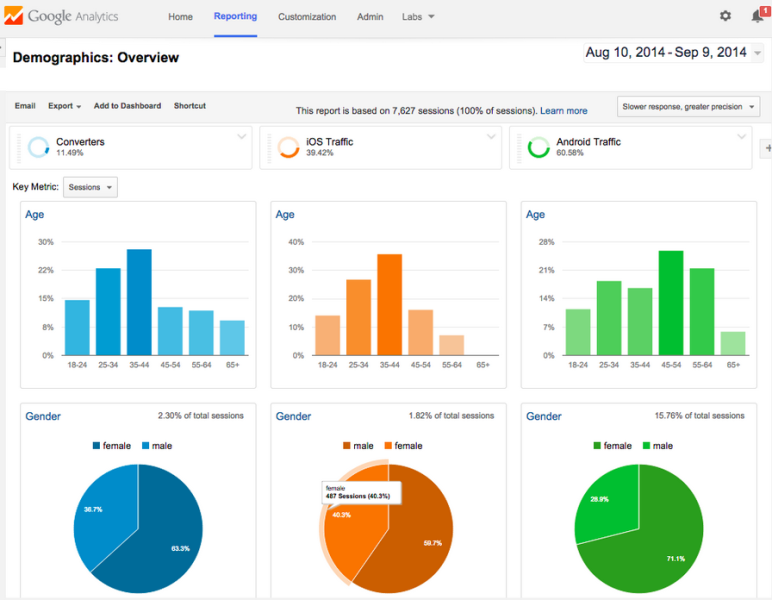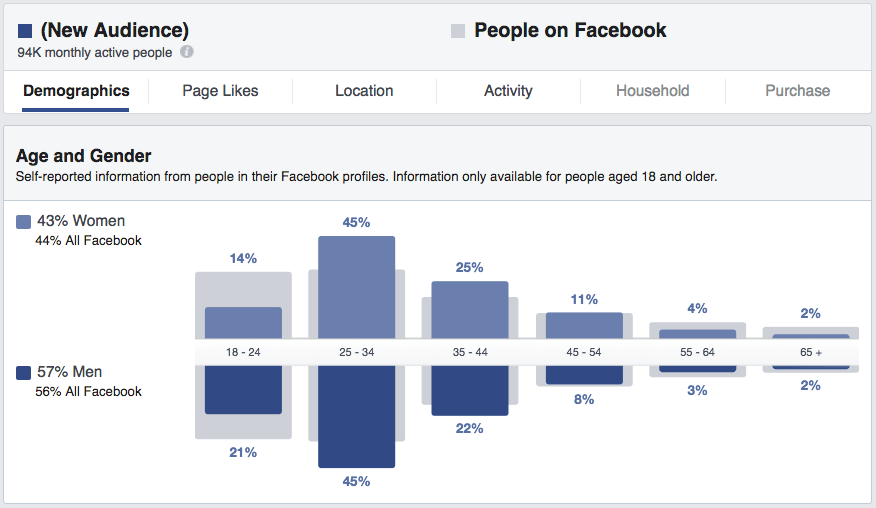How To Define and Reach Your Target Audience
One of the biggest issues companies today run into is over targeting on marketing campaigns. In old school advertising, companies had somewhat of an idea of who their buyers were, but there weren’t many options to get very specific about who to target in ads.
Fast forward to today and now there’s an almost infinite amount of data which causes many marketing teams to waste marketing funds through information overload—meaning there’s so much information, they don’t know who to target.
This article will help you discover the target audience’s meaning. We’ll define what exactly a target audience is, tell you how to find it, and break down some different types of target audiences.
But it isn’t enough to just know what a target audience is and how to find it. We’re also breaking down key strategies for using your target audiences that will let you in on just how important it is to know and define them for your business.
TABLE OF CONTENTS
Target Audience Definition: What is a Target Audience
Difference between Target Audience and Target Market
Target Audience Uses for Online Marketing and Social Media Ads
Target Audience Definition: What Is Target Audience?
Target audiences are groups of consumers—or potential customers—with defined characteristics based on specific demographics and behaviors. Here are target audience examples:
- Male video gamers between the age of 25 and 35 who live in apartments and make under $50,000 per year.
- Females outdoor enthusiasts between 21 and 30 who live in the suburbs that work in an office and make over $50,000 per year
Some common data that helps create target audiences include:
- Age
- Gender
- Income
- Employment
- Location
These audiences are essential for companies when making decisions around marketing strategies. They can tell you where money should be spent on ads, how your brand can become more appealing to customers, and it can even influence what products you want to offer in the future.

Good data forms clearly defined target audiences, and it can help create a target audience persona—or ‘buyer persona’—for your marketing team. This is a highly detailed fictional description of your ideal customers down to their mortgage and available spare cash.
Knowing your target audience means you understand how your customers make decisions about their purchases. Therefore, your marketing campaigns can reach the right people at the right time and use messaging that will peak their interest.
Difference between Target Audience and Target Market
Many businesses and marketing departments often mix the concepts of target audience with their target market. And though they’re similar, not distinguishing the two can increase ad spend in areas that may not maximize the potential return on marketing investment.
Both target markets and target audiences group customers into different segments in order to make business and marketing decisions. But your target market stops at larger—but still specific—groups of consumers you want to target. A target audience can clearly define that market for specific campaigns. For example:
- A target market is recreational sports participants aged 21 to 35
- A target audience is recreational sports participants living in Brussels aged 21 to 35
You can go further with the target audience definition, but that’s the key difference.
Just remember that regardless of your target market or target audience, you can’t target everyone, so don’t waste marketing budget by being too broad. That’s the point of knowing your target audience.
Types of Target Audiences
We talked about the characteristics and demographics that make up a target audience. But there are also different types of target audiences that help further define who a marketing campaign is designed for.
Further segmentation always focuses the ad buy in the right direction and you can sort target audiences by:
Subculture
Subcultures are groups of people that identify by their shared experiences. For example, people who subscribe to a specific form of entertainment like science fiction, pop music, or Disney.
Each one of these groups is a subculture that people use to define themselves. It’s up to companies to understand these various subcultures to know how to reach out to them and peak their interest in certain products
Intent of purchases
Different groups of people are looking for different products and want more information before they make their purchase. So you can organize your target audience into segments who have a specific purchase intention like a new vehicle, clothes, electronics, etc.

Interests
It may seem obvious, but you can further segment your target audiences by their hobbies and interests. Ultimately, this is the type of data that will connect you with your audience on a personal level and help you understand their motivation and behaviors as buyers.
For example, if large segments of your target audience are interested in football, you can figure out ways to work messaging into campaigns that resonate with football fans.
Naturally, creating your target audiences and figuring out the different types they fall into involves extensive research. But this is how your business can determine who it needs to reach, avoid overspending on ad campaigns, and stand out against the competition.
Finding your Target Audience
With target audiences defined, we’ll reveal some techniques you can use in identifying target audiences for your next campaign. These are just some of the tactics we use for growth hacking and have increased leads and sales for companies like Multipharma, Torfs, and Materialise
1.) Google Analytics
For anyone in marketing, Google Analytics is the crème de la crème for researching demographic information about your target audience.
From the Google Analytics dashboard, you’re able to gain insights on your webpage and various landing pages and break them into different sections like location, gender, and age. Plus, each insight has graphs to give you a visual representation of what’s going on.
With this information, you’ll know exactly who is visiting your site and how the company can create content that builds your brand and increases leads and sales.

2.) Reader Personas
If your business doesn’t have an active blog, that’s okay—can we ask why not?—but this element might not work for your business. However, if you do have a blog, then you probably have a persona in mind as to who is reading it when you or your team is writing content.
Also, companies with established blogs may know the persona of those who comment or have reached out for information. In essence, that persona should align with your target audience as those are the potential or current customers who are actively engaging with your brand.
With this information in mind, you can create even more segmented profiles with your content. This allows you to answer questions and come up with solutions for your customers within marketing campaigns.
For example, if you run an auto parts company and your blog readers are asking for solutions on how to make their battery last longer, you could integrate this persona into a target audience profile and create content with solutions to that issue.
3.) Social Media Analytics
Look at your posts and find out what type of post creates the most engagement. Is your videos, memes, photos on instagram, polls? When you know what’s creating a buzz then you can gain insight into the interests of your target audience which is a key element for the profile.
Social media platforms differ in their audiences too, so being able to see insights from each platform is essential—using tools like Hootsuite or Sprout Social can help.
But remember how each platform works!
Twitter works on short-form posts and has a younger audience, whereas Facebook offers long-form content and videos and has an older audience. Instagram is all about visual stimulation.
The point is that there are differences between your Facebook target audience, Instagram target audience, and TikTok target audience. And knowing these elements can help you to create better audience profiles and with marketing strategy planning.
The analytics from these social media platforms are invaluable because they tell you who exactly is looking at your content. From there, you can post better, targeted content that helps you gain followers, shares, and likes.

4.) Social Media Engagement
Regardless of if you’re using the information to create target audience profiles, always engage with your social media following. They are your audience after all.
But you can take things a step further to engage with this audience to find out what they want to see and what they’re interested in. This concept works better with established social media accounts, but can be an easy way to create a better segmented audience profile.
For example, you can create a story or post on facebook that asks customers to send pictures of themselves using a specific product. From the response, you’ll be able to actually see your audience and you’ll have social media analytics tied to the responses. That information is invaluable.
Target Audience Uses for Online Marketing and Social Media Ads
We’ve defined target audience and provided some ways to establish your target audience in advertising from a general standpoint. Now let’s establish some ways to utilize target audiences in online and social media campaigns that reflect why they’re so important in today’s business environment.
Key Audience Targeting Strategies
1.) Remarketing
Remarketing is how businesses are reconnecting with customers or potential customers who have visited or interacted with their site in the past.
The process works by dropping a cookie on a viewer’s browser—with their permission. Then the cookie will help Google display ads as they browse later on to remind customers to return to your business site.
It’s an easy process and set up, but it doesn’t work so well without a clearly defined target audience. Within Google Ads, marketers can review existing target audience lists—it’s possible to download, view and assign audiences on campaigns.
With that information, they can set up remarketing campaigns that will bring back customers. This type of marketing doesn’t set up the initial interaction but certainly pulls back customers who may have been lost in the past.
2.) Custom Audience and Retargeting with Facebook
Facebook has a lot of personalization features within the platform. In fact, it remains the platform with the most options for targeting specific audiences. And one of the best features that gives businesses the opportunity to target the right audiences is through ‘interests’.
Knowing your target audience will help your business to avoid bombarding potential customers with irrelevant content and will help you to avoid overspending on social media ad buys.
People on social media have a very short attention span, so hooking them with relevant content is key. Plus, Facebook has retargeting built into the platform. So you can retarget users who maybe viewed a short video all the way through and then have your team nurture them into a sale.
When you start looking at elements like click-through rates, costs per click, and conversions, you’ll have a better definition of your target audience as well. This only further solidifies the value of the data and lets you know what you need to spend on campaigns to create more leads and sales.
This is what creates market intelligence and allows a business to run cost-efficient marketing campaigns.
3.) Facebook Lookalike Audiences
Even if you don’t have a fully established social media presence, it’s possible to create audience profiles and adapt your target audience definition using Facebook’s data.
With Facebook Lookalike Audiences, marketers have the ability to reach people who share similar interests, behaviors, and characteristics to people already interacting with your brand. You can use these targeting options to adapt your ad buys and even further define your target audience.
Plus, if you’re targeting multiple audiences, you can set up campaigns so the most relevant content appears to the ideal target audience. Campaigns like these reflect the importance of knowing your various target audience and how to speak to them.
4.) Keyword lists from LinkedIn
A LinkedIn target audience may not seem like the most obvious choice for creating effective online marketing campaigns, but the platform has unique capabilities compared to other social media platforms.
Knowing job profiles for your target audience can help your marketing team net top tier keywords for use in campaigns. It’s possible to use LinkedIn’s target audience capabilities and research different professionals and scrape their profiles for keyword lists.
While this strategy may be more useful for B2B companies, it’s just one highlight as to why knowing your target audience can help you access essential information. They’re a great way to help you test things and reach specific targets quickly and with cost-efficiency.
5.) Chatbots
It might seem like a stretch to connect your target audience definition with a form of artificial intelligence. But machine learning technology now makes it possible to identify target audiences within chatbot conversations.
From these analytics, you can determine whether it’s worthwhile for your marketing or sales team to pursue certain leads during the qualification process. Again, this won’t be possible unless you can lock down exactly who your target audience is.
6.) A/B Testing and Updating
You may know your target audience now, but adaptability and change are essential to keeping a company afloat. As you run campaigns, you may need to adjust your strategies.
A/B testing with content with various target audiences can help you determine the things you may need to adjust in your campaigns like copy, images, posting times, types of images, etc.
All of this testing in small pools helps marketing teams to save money in the long run with larger campaigns and can even provide information you didn’t even know about your customers.
It’s a reason why regular analysis of target audiences is essential. Afterall, you must be able to reach the people you want to reach online and on social media and that could change over time.
Look at the companies still alive who marketed to children back in the 80s but now market to adults seeking retro items. They adapted their marketing strategy to tap into nostalgia, and it’s not possible without a clearly defined target audience.
Conclusion
Knowing what a target audience is, how to find it, and how to use the information is key for any business. This article covered some of the basic concepts and gave some helpful tips to help you incorporate target audiences into your marketing strategies.
But this is only the tip of the iceberg. If you’re looking for a team who is an expert and has tons of experience in finding and utilizing target audiences, then reach out to Upthrust.
Upthrust is a global digital business acceleration office that can help your company implement growth marketing processes. We build high-performing digital products—using elements like target audiences—and growth hacking tactics to help companies grow faster and rope in more leads and sales.
